The Temple of Melqart or Hercules Gaditanus was a columned temple containing an eternal flame, a fire raised on an altar, maintained day and night by priests
By Nick Nutter | Updated 14 Dec 2022 | Cádiz | News |
Login to add to YOUR Favourites or Read Later
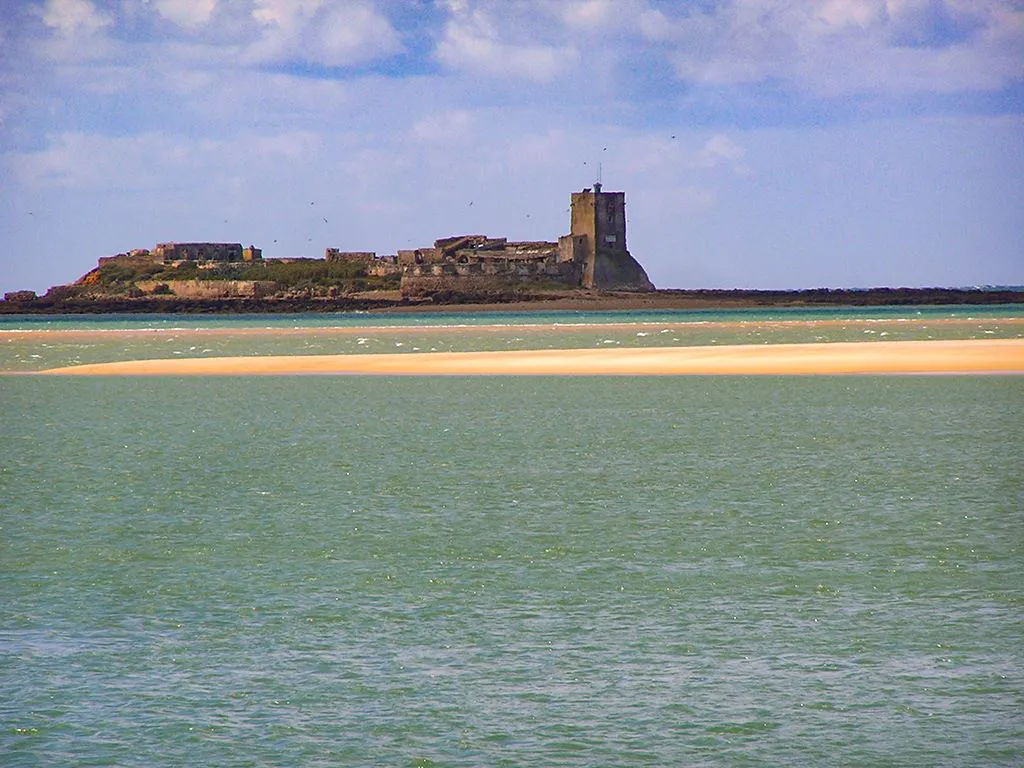
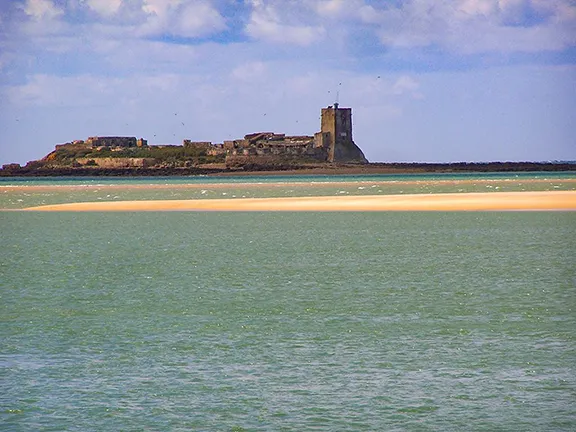
Sancti Petri Island
It is now well known that, back in the 9th century BC, the Phoenicians established a trading settlement at Cádiz. They called it Gadir. Ample archaeological evidence exists, much of it displayed at the Archaeological Museum in Cádiz, that the Phoenicians not only had a significant presence in the Cádiz area, they had also been visiting the area for some time before they decided to invest in a town.
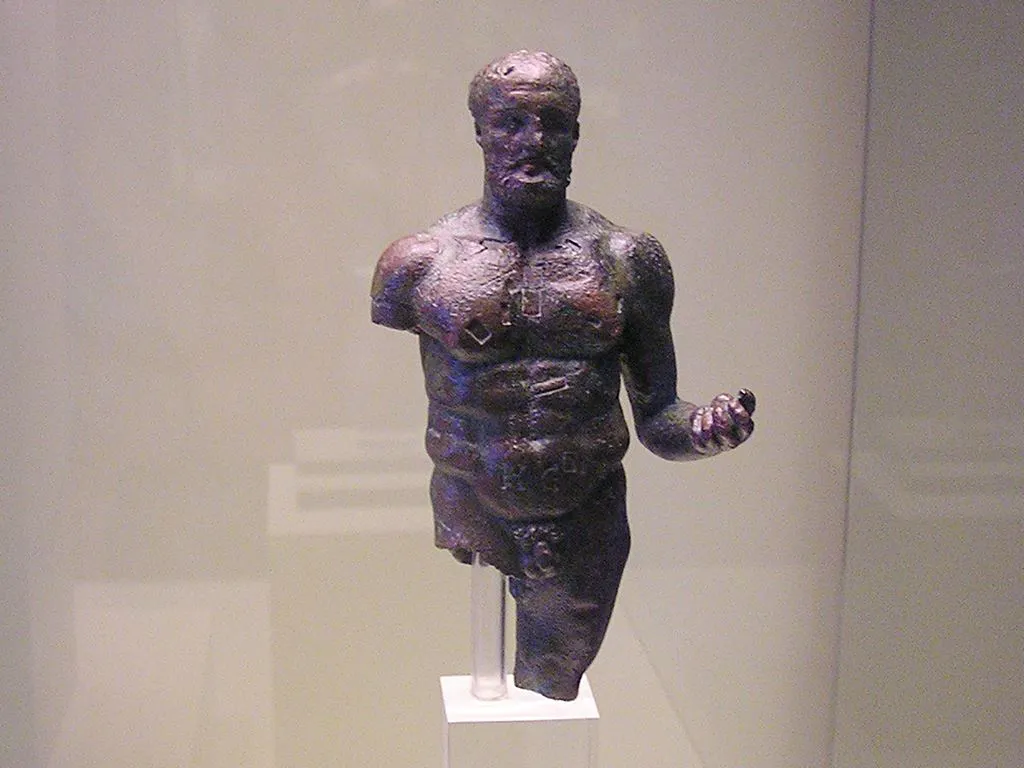
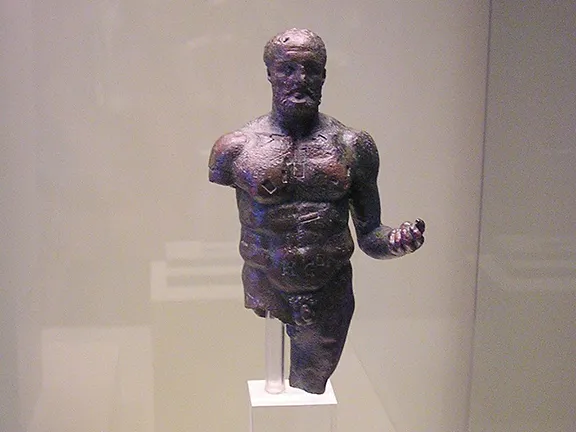
Statue Hercules Gaditano
The Phoenicians in western Andalucia had their roots in the city of Tyre, now in the Lebanon. Despite their intimate knowledge of the sea, the Mediterranean in general and their proficiency at navigation, they were still a very superstitious people, particularly those who did venture out onto the waves. Shrines were established along the trading routes at which the seafarers would leave small offerings to either placate their gods if it was stormy or in an attempt to win favour, fair winds and good weather from their god of the sea, a character called Yam. A good example of such a shrine is in Gorham’s Cave on Gibraltar. Sitting above Yam and a host of other gods in the Phoenician pantheon was the god Melqart, also known as also Melkarth or Melicarthus. This was the god whom the Phoenicians believed protected the city of Tyre, a literal translation of the name is ‘King of the City’, sometimes ‘Lord of Tyre’.
In Tyre itself there is a record of a sanctuary to Melqart written by the 5th century BC historian, Herodotus of Halicarnassus. Herodotus observed that, “in his age, the sanctuary was richly furnished and that there were many votive offerings.” He also saw two pillars: "one of pure gold and one of an emerald stone of such size as to shine by night". Other authors claim the pillars were bronze. Nothing now remains of the sanctuary apart from two Egyptian style columns that may have been part of the temple. They were recycled by the Crusaders who built a church on the same spot somewhere around 450 AD.
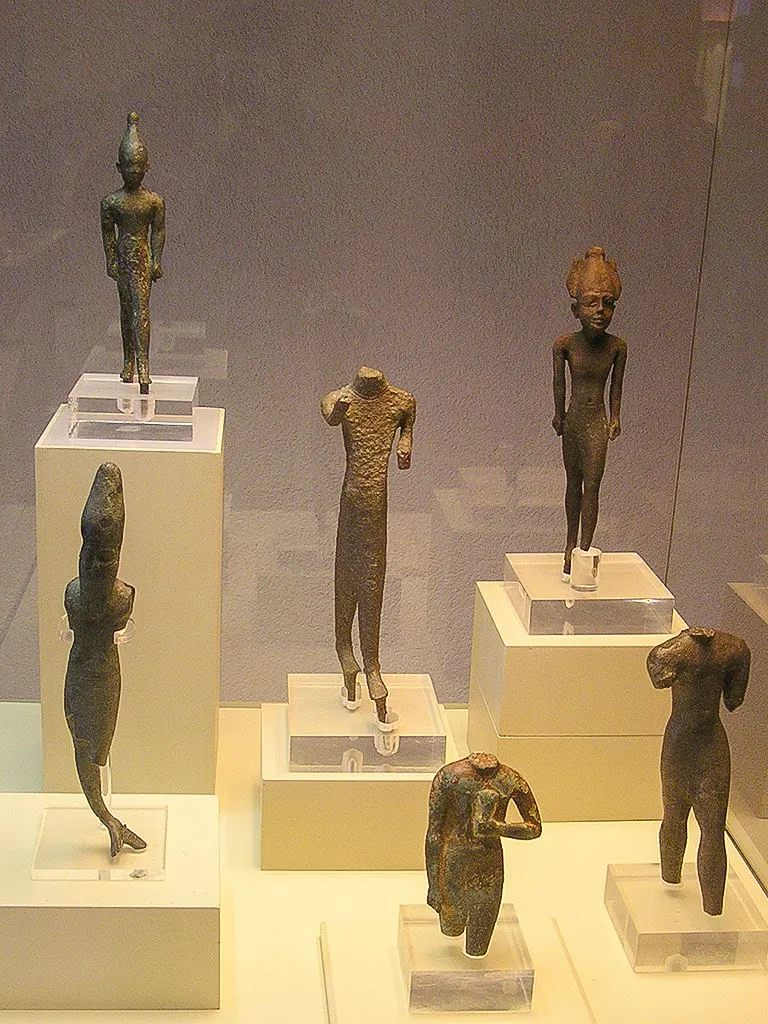
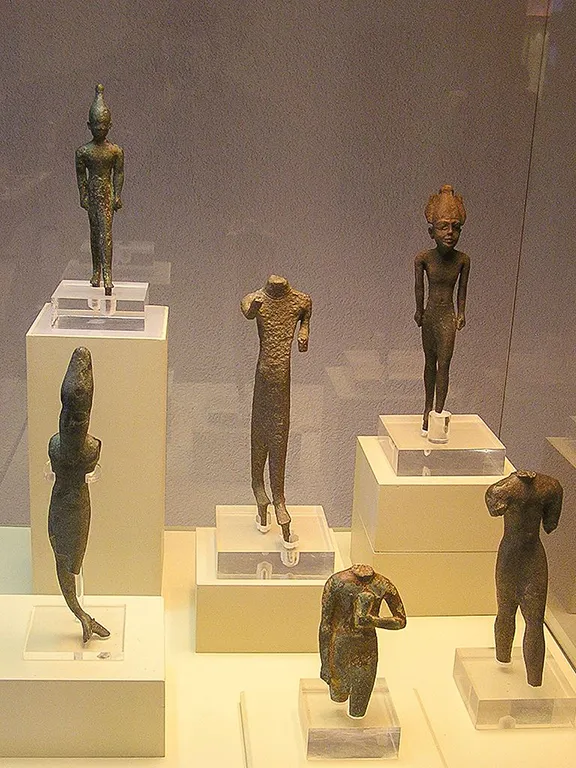
Statues Melqart, Baal and others
The Phoenicians expanded their trade routes west, out of the Mediterranean and into the Atlantic Ocean via the only sea passage, the Gibraltar Strait. Then they went north up the Iberian coast and south down the African coast. In the Strait the mariners had to pass between two mountains, Jebel Musa and Gibraltar, they called them the 'Pillars of Melqart'. They were later renamed the 'Pillars of Hercules' by the Romans. In order to protect their trade routes and warn off any competitors wanting to follow them, the Phoenicians started a myth that the Pillars of Melqart marked the end of the world and beyond lay unimaginable sea monsters and navigational hazards. The myth was taken by the Greeks and turned into to an epic poem, now lost, written by Peisander, dated about 600 BC. The Romans went one step further and attributed the creation of the Gibraltar Straits to Herakles (the Greek god) or Hercules, the Roman equivalent.
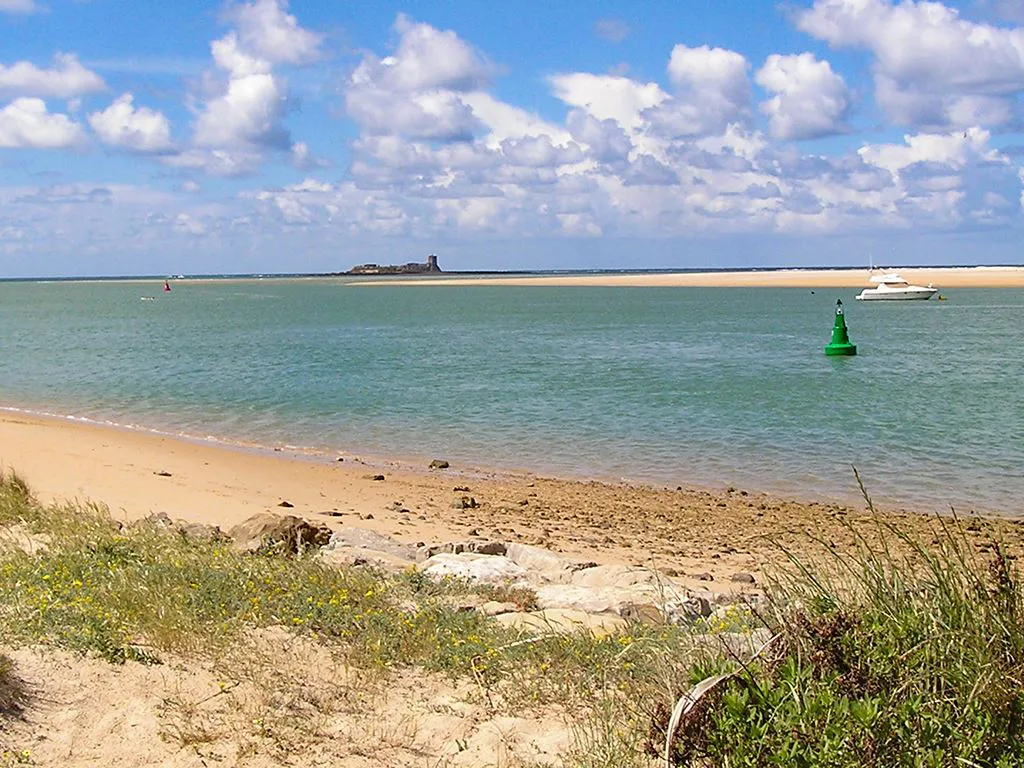
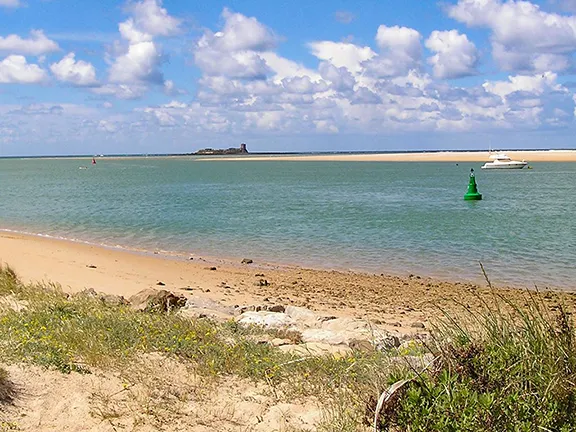
Sancti Petri from San Fernando
Back to the Phoenicians. Enough artefacts have been found in the seas surrounding Cádiz to support the theory that the Phoenicians at least built a shrine or sanctuary in the vicinity of what is now the island of Sancti Petri. Such a sanctuary, dedicated to Melqart, is mentioned by Strabo in the 1st century BC. The same sanctuary became dedicated to Hercules when the Romans moved in. The only problem with the Strabo account is that he says the city of Gadir was built on the western part of the island and the sanctuary or temple, on the eastern part. Even during the early centuries BC, when the coastline was very different to that of today, Sancti Petri was a narrow island running north – south and, as modern excavations have shown, the urbanisation was in the northern part. Strabo, although well-traveled, never visited Iberia. The third volume of his monumental work, Geographia, is dedicated to Iberia but the contents are mainly taken from the work of another, Polybius. Strabo also had a habit of ignoring geography entirely and basing his words on human accounts, verbal history and myths so his description of the sanctuary of Melqart should be taken with a pinch of salt.
An account by Julius Caesar may be more accurate but he fails to indicate just where the sanctuary was located on the island. Later Latin writers such as Titus Livy, (writing about 25 BC), Tiberio Cacio Asconius Pedianus Silio Italico and Pomponio Leia, (both writing in the 1st century AD) allow us to form a picture of what the, by now renamed Temple of Hercules Gaditanus, may have looked like.
A columned temple containing an eternal flame, a fire raised on an altar, maintained day and night by priests,. The columns forming the entrance were elaborately decorated. The frontispiece between the columns depicted the twelve labours of Hercules, carved in bronze. The latter probably part of the enhancements made by the Romans during the reign of Trajan. Offerings would have been place inside the entrance columns. The entire temple would have been on a raised stone plinth.
The description is not far off that of the Temple of Melqart in Tyre itself. As to the positioning of the temple, and this is all supposition. A temple on the south end of Sancti Petri, with two columns facing south, through which the eternal flame would be visible to sailors travelling north up the coast, having just passed through the Pillars of Hercules, would have far more spiritual significance than a temple on the east side of the island with its columns facing east.
Wherever the temple was located, it has now disappeared as the coastline changed, influenced by increasing deposition of silt, erosion of offshore islands and a lowering sea level. The temple itself may have been destroyed as a much later Arab text called Dikr bilad al-Andalus reveals:
On this island is the monument called Idol of Cadiz, located on the seashore; In height, perfection and beauty, this work has no other comparison than the monument in the city of the lighthouse, in Yilliqiya. The Idol of Cadiz was a beacon one hundred cubits high [...] on which appeared an anthropomorphic image of marvelous naturalness, balance and size; her face turned to the west, where the ocean is, and she wrapped her body in a cloak, protecting herself from the north. [...] This lighthouse was for Muslims a guide in the sea, but it was destroyed by Ali` Isa b. Maymun in the year 540 (1145-46), when he rebelled in the city of Cadiz.
Needless to say, the Temple of Hercules Gaditanus has been sought by archaeologists for centuries.
Within the ancient Phoenician-Roman city of Cádiz, two shrines have been identified, one the Temple of Astarte and the other the Temple of Baal Hamon, both in the north. A location at the south end of Sancti Petri has been more or less accepted for the Temple of Melqart since the mid 1960s. Now Ricardo Belizón, a Ph.D. student at Seville University in southern Spain, has come up with a new hypothesis, which is backed by scientists from his university and the Andalusian Institute of Historical Heritage (IAPH). Thanks to free software and digital terrain modelling, Belizón has identified traces of a monumental building in the Caño de Sancti Petri, a shallow channel in the Bay of Cádiz, between the towns of Chiclana de Frontera and San Fernando. The site is a huge marshy channel dominated by an islet and the castle of Sancti Petri, which rises above it.
The exact area has been defined thanks to technology known as Digital Terrain Model (DTM) which was provided by the National Geographic Institute and the Navy Oceanographic Institute. Measuring 300 by 150 metres, the rectangular structure lies between five and three metres underwater and seems to fit with descriptions in the classics that describe both the location of the temple and its definition as a great Phoenician monument.
The current research conflicts with the last published paper on the location of the temple, ‘The location of the sanctuary of Melqart in Gadir: contribution of the PNOA-LiDAR data’, by Antonio Monterroso-Checa, professor in the Archaeology department at Córdoba University, who maintains the temple was built on the Cerro de los Mártires near San Fernando, which would have been an island three thousand years ago.
The search for the Temple of Melqart continues.
Bronze statuette with silver inlays of the Hercules Gaditano, as can be seen by the initials H. G. engraved in the abdominal area. He carries the apples of the Hesperides in his left hand. High Roman Empire, I-II centuries.
Five archaic Phoenician bronzes found around the islet of Sancti Petri. The statuette located at top right represents Melkart and top right Baal, 8th-7th centuries BC.